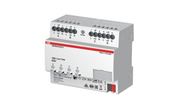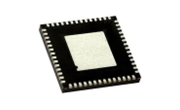Machine vision: Revolutionizing quality control in industrial automation
High-precision quality control is necessary for manufacturing flawless products.
Superior quality control is achievable only through machine vision. The automotive manufacturing industry utilizes machine vision to detect paint imperfections that are invisible to the human eye. In pharmaceuticals, it verifies packaging integrity. This revolutionary technology automatically inspects, detects defects (if any), and optimizes processes. As part of industrial automation, machine vision uses many advanced electronics, including high-resolution cameras, sensors, and powerful processors, to deliver real-time, accurate results, ensuring products satisfy stringent standards.
Machine vision boosts throughput and enhances reliability by minimizing human error. Therefore, machine vision is indispensable for modern production lines. This article explores how machine vision sets a new standard for manufacturing excellence.
Fundamentals of machine vision in industrial automation
For precise quality control and automated decision-making, machine vision involves cameras (high-resolution cameras with CMOS or CCD sensors), and software working together. In industrial automation, machine vision serves as the "eyes" of production.
The high-resolution cameras capture detailed images, and LED lighting systems ensure consistent illumination for accurate inspections. Image processing units, such as GPUs or FPGAs, analyze data in real-time to detect defects or verify assembly with sub-millimeter accuracy.
Machine vision is employed in a wide range of applications, ranging from electronics (inspecting circuit boards for soldering flaws) to robotics (guiding precise part alignment) and packaging (verifying labels and barcodes). Machine vision achieves consistent results by eliminating human variability by automating these tasks.
For example, it can measure component dimensions within ±0.01mm, ensuring compliance with tight tolerances. Manufacturers can thus maintain better quality control and achieve high standards while scaling production.

Figure 1: Components of machine vision
Electronics technology powering machine vision
Machine vision performance depends on advanced electronics tailored for speed and precision. High-resolution cameras, fitted with CMOS sensors, provide high dynamic range and fast frame rates (up to 120 fps), capturing minute defects in real time. Smart LED lighting systems with tunable wavelengths, paired with high-speed telecentric lenses, enhance contrast and eliminate distortions—a critical feature when inspecting reflective surfaces such as metal or glass.
Parallel processing is enabled through processing hardware, such as GPUs or FPGAs. Complex images with latency can be analyzed under 10 ms. Data can be transferred rapidly between cameras and control systems via connectivity protocols like GigE Vision and USB3 Vision. The data can be seamlessly integrated with PLCs and SCADA systems to feed inspection results into production workflows.
Emerging technologies, such as hyperspectral imaging and 3D vision, enable detailed inspections like solder joint analysis in PCB manufacturing. These electronic advancements make machine vision a cornerstone of automated quality control, delivering unmatched reliability and speed.
Enhancing precision and quality control with machine vision
Machine vision applications include defect detection, verifying processes, and traceability. To do this, it must be precise in quality control and achieve sub-micron accuracy in measurements, such as ±0.01 mm tolerances in semiconductor wafer inspection.
In automotive manufacturing, it identifies scratches or dents with 99.9% accuracy, ensuring flawless paint finishes. In electronics, it verifies screw torque via pattern recognition, preventing assembly errors. Machine vision reads barcodes and QR codes, tracking components across supply chain.
Real-world impacts are significant: in electronics, it detects micro-cracks in smartphone screens, reducing returns by 15%. In pharmaceuticals, it ensures 100% compliance with FDA standards by verifying pill counts and packaging integrity.
Machine vision, through automated inspections, slashes manual inspection time by up to 80% . These improvements makes them indispensable for manufacturers as they enhance product reliability, reduce waste, and boost operational efficiency. Machine vision helps manufacturers to reach for zero-defect production.
Challenges and future trends in machine vision
Despite its advantages, machine vision continues to face challenges. High entry costs (ratcheting up to $10,000+ for 3D vision systems), can deter adoption, particularly for smaller manufacturers. Setup complexity requires skilled engineers for calibration and integration, while environmental factors like dust or vibration can degrade camera performance in harsh industrial settings.
However, future trends promise solutions. Defect classification are under improvement with advancements in AI and deep learning, particularly convolutional neural networks (CNNs), boosting accuracy by 20% for complex patterns. Edge computing, powered by compact SoCs, enables on-device processing, reducing latency and cloud dependency. Collaborative vision systems, leveraging 5G or Time-Sensitive Networking (TSN), allow multiple cameras to share data for holistic inspections, such as full-vehicle scanning in automotive applications. Affordable solutions, including open-source software and lower-cost sensors, democratise SMEs' access. These advancements will enable different industries to adopt it for smarter and better-quality control.
Conclusion
Machine vision has transformed industrial automation, elevating quality control to new heights of precision and efficiency. By harnessing advanced electronics including—high-resolution cameras, smart lighting, and powerful processors—it delivers sub-micron accuracy, real-time defect detection, and seamless integration into production workflows.
From automotive to pharmaceuticals, machine vision ensures flawless products, reduces errors, and significantly cuts inspection times. Despite challenges like high costs and setup complexity, innovations such as AI integration, edge computing, and affordable solutions are paving the way for broader adoption.
As these technologies evolve, machine vision will become even more versatile, enabling manufacturers to meet rising demands for quality and efficiency. Farnell Electronics helps deploy machine vision systems in manufacturing industries, brightening their future. It promises smarter, more adaptive systems that will redefine manufacturing standards and drive industries toward zero-defect production.
Stay informed
Keep up to date on the latest information and exclusive offers!
Subscribe now
Thanks for subscribing
Well done! You are now part of an elite group who receive the latest info on products, technologies and applications straight to your inbox.












